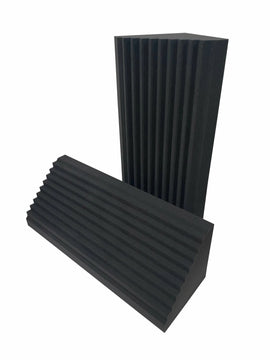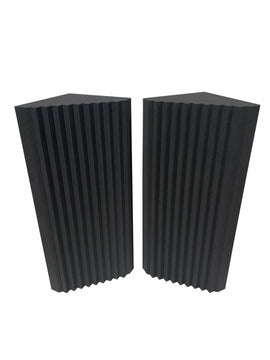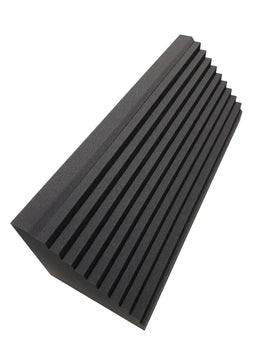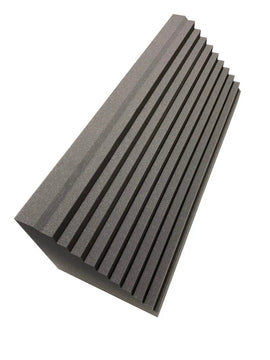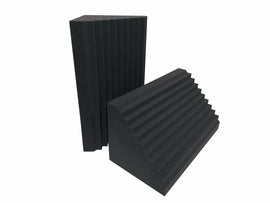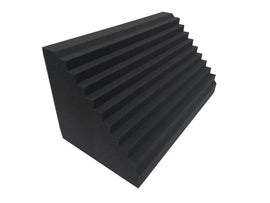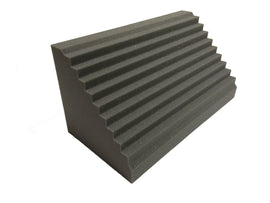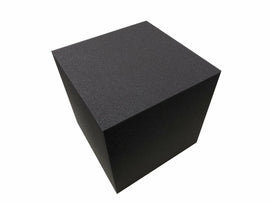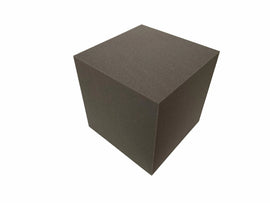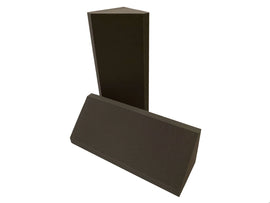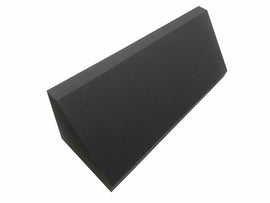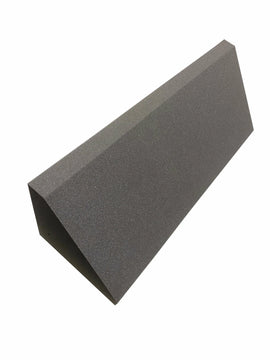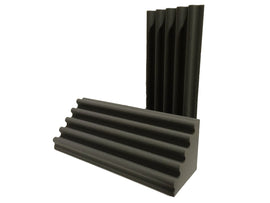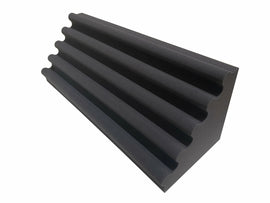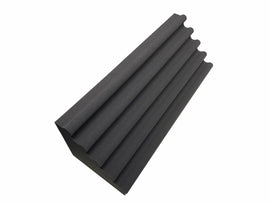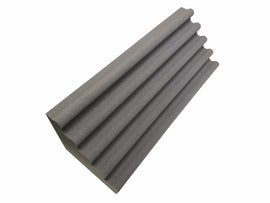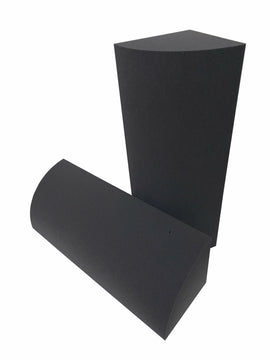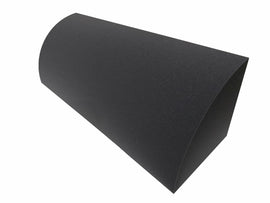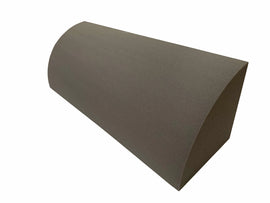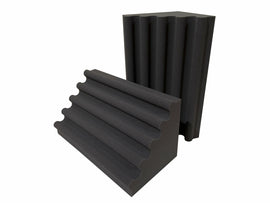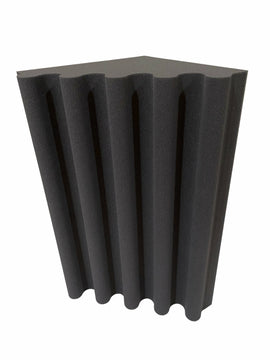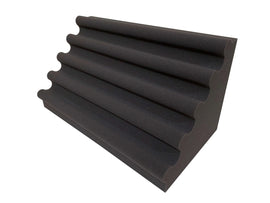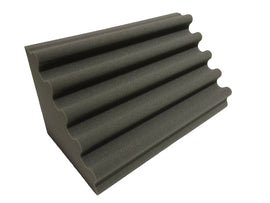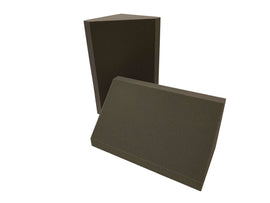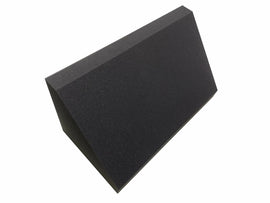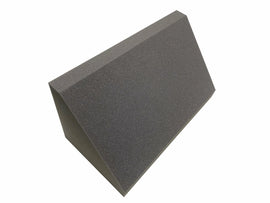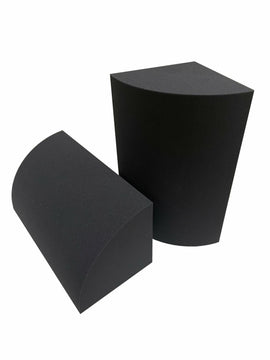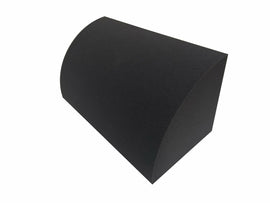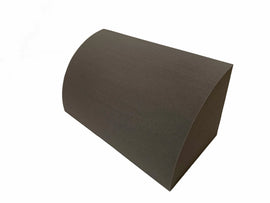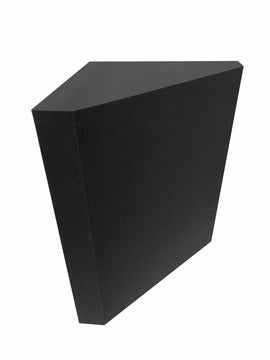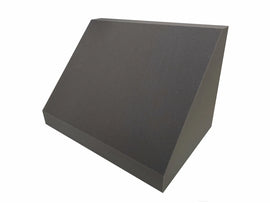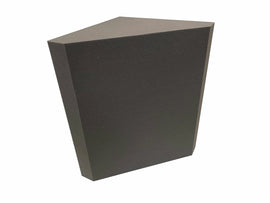Acoustic Foam Studio Bass Traps for Recording, Rehearsal & Mixing
Why Bass Traps Are Essential for Music Rooms
Low‑frequency room modes distort what you hear and what your mic captures. Bass traps absorb these modes in corners, reducing boom and tightening the stereo image so recording and mixing decisions actually translate.
Recording & Rehearsal Rooms
- Place bass traps in front corners first to tame boom near microphones and instruments
- Add rear corners to improve room balance and decay
- Combine with tiles/panels at first reflections for clarity and intelligibility
Mixing & Production Suites
- Aim for consistent low‑end at the listening position
- Start with 4 traps (front vertical corners); expand if response is still uneven
- Symmetry matters—treat opposing corners for a balanced field
Podcasting Guidance (Different Needs)
For spoken word, the right acoustic tiles typically give broad‑band control. Most podcast rooms won’t need bass traps unless a specific low‑end issue remains after tiling (audible boom or boxy tone). If that happens, add 2 traps in the worst corners and reassess. Otherwise, invest in effective tile coverage first.
How Many Bass Traps Do I Need?
- Small music room (≈3 × 3 m): start with 8 traps (front + rear vertical corners)
- Larger or very rigid rooms: 12-16 traps; stack if decay is long
- Podcast rooms: 0 by default; 2 only if a measured or clearly audible problem persists
Placement Tips
- Prioritize vertical corners from floor to ceiling
- Front wall corners first; add rear for balance
- Avoid blocking doors/vents; keep symmetry where possible
Materials, Safety, and Specs
- Independently tested low‑frequency absorption
- UK‑made foams with consistent density/cell structure
- Compatible with 12" tiles and 2 × 4 ft panels
FAQs
Q: Are bass traps necessary in every studio?
A: In music studios (recording, rehearsal, mixing), yes—they’re foundational for accurate low‑end. In podcast rooms, usually not unless boom persists after tiling.
Q: How many traps should I start with?
A: Music rooms: 8 is a reliable starting point (front + rear corners). Podcast rooms: 0; add 2 only if needed.
Q: Do bass traps reduce echo?
A: They mainly target low frequencies. Use tiles/panels for mid/high reflections and intelligibility.
Q: Can I mix traps with tiles and panels?
A: Absolutely—this is the standard full‑range treatment approach.
